Blogs
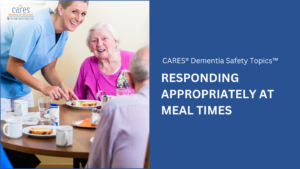
Respond Appropriately During Mealtime: The third step in CARES® approach
When caring for someone with dementia, helping them eat well is more than just offering food—it’s about understanding behavior around food, their needs and responding
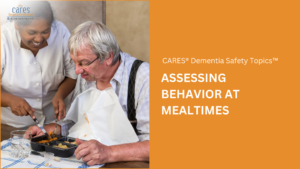
Assessing Behavior at Mealtimes: The Second Step in the CARES® Approach
Mealtimes can be a source of comfort and connection—but for people living with dementia, they can also become moments of confusion or distress. That’s why
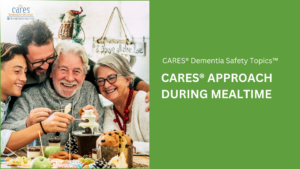
CARES® Approach to Mealtime: The First Step – Connect with the Person
For people living with dementia, mealtime should be more than just nourishment—it should be an opportunity to connect, engage, and feel comforted. The CARES® Approach
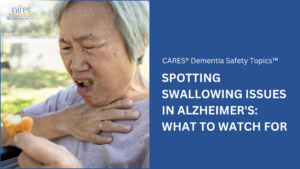
Recognizing the Warning Signs of a Swallowing Problem in Alzheimer’s Disease
Swallowing is a function we often take for granted. Yet, for individuals living with Alzheimer’s disease, this seemingly simple task can become increasingly difficult as

Eating Abilities at Various Stages of Alzheimer’s Disease
Eating is a deeply personal and social activity, often tied to comfort, identity, and daily routine. For individuals living with Alzheimer’s disease, the ability to

Routines, Habits, and Challenges: Supporting Mealtimes for People with Dementia
When caring for someone with dementia, understanding their personal habits—especially around food—can make mealtimes much smoother and more meaningful. Every person has their own routines
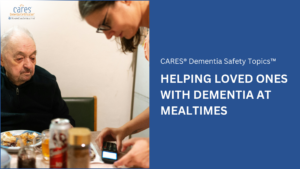
Helping Loved Ones with Dementia at Mealtimes
Mealtime is more than just eating—it’s a time to connect, feel comfort, and stay independent. For people living with dementia, eating can sometimes become a

S – Sharing with Others Helps Build Better Care Together
S – Share With Others This is the last step in the CARES® Approach. Sharing with others in dementia care is very important. It helps

E – Evaluate What Works to Bring Comfort and Connection
E – Evaluate What Works The fourth step in the CARES® Approach encourages us to gently reflect on what truly helps in a caregiving moment.
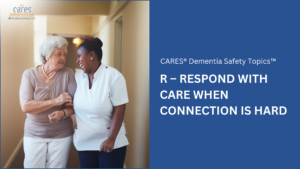
R – Respond with Care When Connection Is Hard
R – Responding with Care This step in the CARES® Approach is all about using what you know and what you’ve noticed to respond in
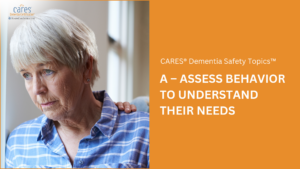
A – Assess Behavior to Find the Meaning Behind the Changes You See
A – Assess Behavior The second step of the CARES® Approach is to gently assess behavior. When someone is no longer able to speak or

C – Connecting with the person
C – Connect with the Person “Connect with the person” is the first step in the CARES® Approach to dementia care. To truly connect with

Adjust Your Approach
When interacting with someone who has Alzheimer’s disease or a related form of dementia, it’s essential to focus on their abilities—not just their limitations. Every
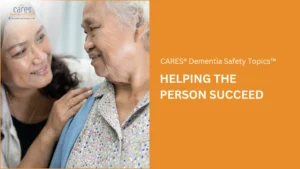
Helping the Person Succeed
When supporting someone with dementia, it’s easy to focus on what they’ve lost. But to truly engage them, we also need to see their strength
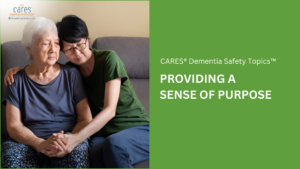
Providing a Sense of Purpose
Connecting with a person living with dementia can often begin with a simple conversation—especially when that conversation centers around something meaningful to them. Talking about
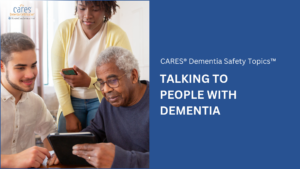
How to Easily Connect with a Person Who Has Dementia
Talking to someone with dementia can feel a little tricky at first, especially if you’re unsure what to say or how to keep the conversation

Everything Is an Opportunity to Connect
People living with dementia have the same need for connection as everyone else. Every interaction—whether during dressing, meals, or daily activities—is an opportunity to engage
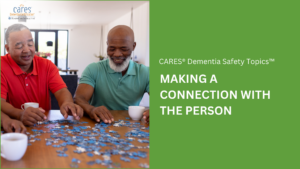
New Way of Caregiving by Connecting with the Person
What does it mean to “make a connection” with the people with dementia? It means that you have done something with or for them where
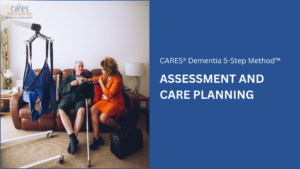
Assessment and Care Planning: Putting It All Together
Caring for a person with dementia requires ongoing assessment and care planning to ensure their evolving needs are met while fostering trust between caregivers and

The CARES® Approach Can Save You Time!
Caring for someone with dementia can be challenging, but the CARES® Approach makes it easier by reducing stress and improving efficiency. Instead of adding extra
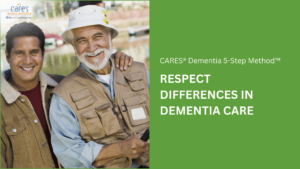
Respecting Differences in Dementia Care
Every person receiving care is unique, with different backgrounds, cultures, beliefs, and identities. As caregivers, embracing these differences fosters meaningful connections and ensures compassionate, person-centered

How Does Your Approach Feel to Others?
How Does Your Approach Feel to Others? You learned about the Positive Physical Approach in Key #2. To truly understand its impact, try this simple

Keys to Success with CARES® Approach
As you apply the CARES® Approach, you’ll discover that some strategies work better than others. Here are 10 essential keys to success when caring for
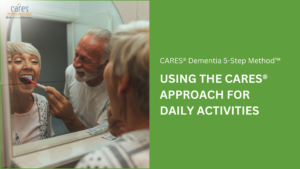
Using the CARES® Approach for Daily Activities
For people with dementia, everyday tasks can become challenging. Familiar items like a toothbrush or comb can cause confusion, and performing routine activities may feel
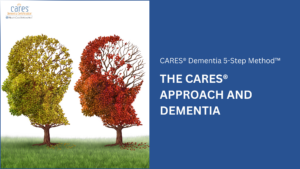
Making Dementia Care Easier with the CARES® Approach
The CARES approach by Healthcare Interactive is a structured method for person-centered dementia care. It stands for Connect, Assess, Respond, Evaluate, and Share, forming the

Impact of the Pandemic on Dementia Care
COVID-19 has significantly changed how we provide care, especially for people living with dementia. It’s a tough time for everyone, but the challenges are even
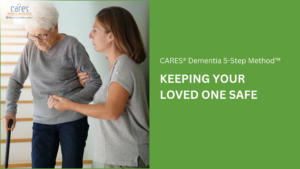
Keeping People with Dementia Safe and Thriving
You are an important part of creating a safe environment for those you care for. Safety isn’t just about physical spaces—it includes emotional well-being and

Dementia and Elder Abuse
If you have tried everything to understand a person’s behavior but still feel uneasy, elderly abuse in dementia could be the cause. As Alzheimer’s disease

Change Your Approach and the Environment
As you know, dementia leads to confusion and affects how well people can manage things, which then influences their behavior. Since people with dementia can’t

What Does Your Behavior Communicate?
A Person living with dementia may struggle to understand the words you say, but they will understand How you communicate—the tone of your voice, your
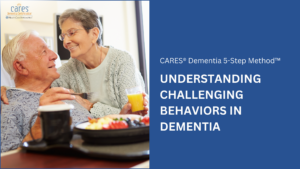
Dealing with Challenging Behaviors in Dementia Care
Caring for someone with dementia involves understanding a variety of behaviors, such as repeating phrases, hoarding items, or wandering. These behaviors and others are normal

Understanding Nonverbal Communication in Dementia
Understanding non-verbal communication is essential when working with people living with dementia. Nonverbal communication refers to how we use body language, facial expressions, gestures, tone
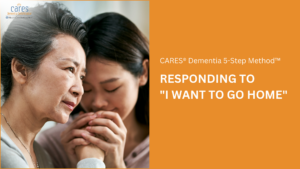
Responding to “I Want to Go Home” in Dementia Care
Understanding the Situation People living with dementia often express a desire to “go home,” even when they are in a place they consider their home.
